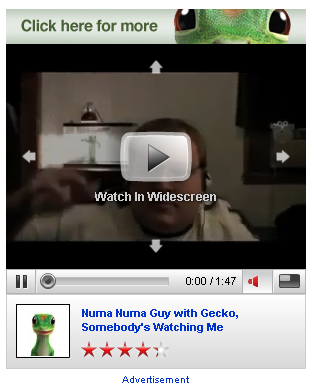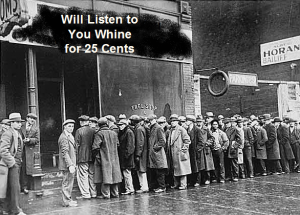Before we armchair quarterback Geico’s YouTube spend today, let me share a secret story. The names will be changed to protect the innocent.
An extremely popular YouTube star (let’s call him Spiffy) last fall mentioned something fascinating to me in private. A major consumer-products good brand (let’s call them “Yummy Snack”) paid him handsomly to create an enteratining video incorporating Yummy Snack. A member of the Yummy brand team had shared the success story at a conference I attended, but left something critical out. It seems Yummy’s agency hadn’t asked Spiffy to post the entertaining/promotional Yummy video on Spiffy’s channel!
The talented Spiffy voluntarily posted it on his channel, and THAT was the Yummy video that popped. Not one posted by Yummy Snack on some branded YouTube channel page. Not because media dollars drove views. I thought that Spiffy’s generous move was so cool, I’ve decided not to call out Yummy’s agency on this horrible oversight.
YouTube might have saved Yummy, but can you blame them? Google is more concerned about selling media dollars than tipping off agencies to the organic power of a star’s audience.
YouTube doesn’t make money when a promotional video goes viral… only when there’s an ad buy.

I like to think agencies have learned something in the past year, so it’s sad to find history repeating itself even today. Geico insurance purchased the expensive YouTube homepage spot to boast its “Gecko & Numa Numa kid video,” which prerolls (without audio). Today’s ad spend cost the Geico more than you or I make in a year, and Gary Brolsma (NumaNuma), the online-video sensation, isn’t posting the video on his own channel concurrently.
Are you kidding me? Much of the value of the YouTube stars is his or her embedded audience. Most stars have fans that will propel the video to the top of the “most watched” and “highest rated,” and share it with friends (assuming it doesn’t suck).
As an example, if Fred made a video endorsing Poprocks, his video would get million of views. If the agency posted it — even with some advertising dollars promoting it — it would get far less.
For a moment, let’s put aside the debate about Geico’s agency associating itself with the NJ kid who is mostly a “one-hit wonder” lacking a recurring audience. Numa only has 35K subscribers and his recent videos are fetching just a few thousand views. Even so, Numa dual posting the video would certainly attract views for an ROI that’s as good as any media spend. The agency gets credit for driving homepage views to its own “Its the Gecko,” channel instead of Numa Numa’s… but one can’t help but wonder if there’s a longer vision for that branded channel or if it was an afterthought.
Why on EARTH would Geico not pay Gary a few clams to post it on his channel? Even without a lot of daily views, Gary could have posted it on his channel concurrently, and gotten views by:
- Showing us a “behind the scenes” footage
- Featuring the video on his channel page
- Making the Geico spot a video reply to his big hit, where it would get residual views
I’d love to know if this was an oversight or a thoughtful decision because, for instance, Gary wanted more coin to distribute it than made sense for the agency. But absent that, it’s going to be my case study for being “half pregnant” on YouTube– smart enough to tap a star and invest in media, but not savvy enough to tap into the creator’s audience as well.
The lesson: It’s not smart for brands to tap into know YouTube stars without buying media, and it’s not smart to buy media without getting some “street cred” from a known YouTuber. It’s smart to do both. Who’s going to help brands figure this out?
(I’d like to use the case study I referenced at the beginning, but the star would get tainted by the agency for mentioning this slip and “Spiffy” doesn’t deserve it).




